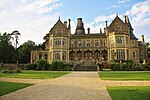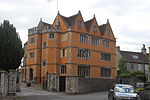Church of St Mary, Laverton
11th-century church buildings in EnglandChurch of England church buildings in Mendip DistrictGrade II* listed buildings in Mendip DistrictGrade II* listed churches in SomersetUse British English from September 2021

The Anglican Church of St Mary in Laverton, Lullington, Somerset, England was built in the 11th century. It is a Grade II* listed building.
Excerpt from the Wikipedia article Church of St Mary, Laverton (License: CC BY-SA 3.0, Authors, Images).Church of St Mary, Laverton
Steps Lane,
Geographical coordinates (GPS) Address Nearby Places Show on map
Geographical coordinates (GPS)
| Latitude | Longitude |
|---|---|
| N 51.2757 ° | E -2.3194 ° |
Address
Steps Lane
BA2 7QZ
England, United Kingdom
Open on Google Maps










